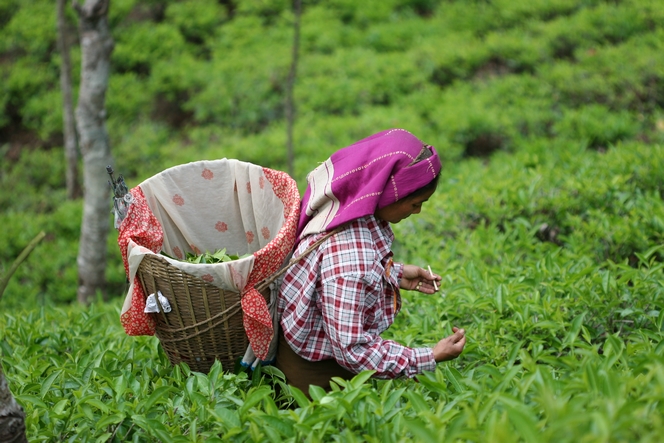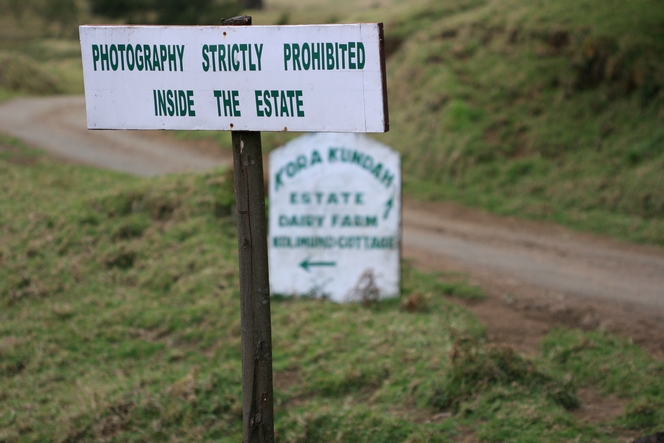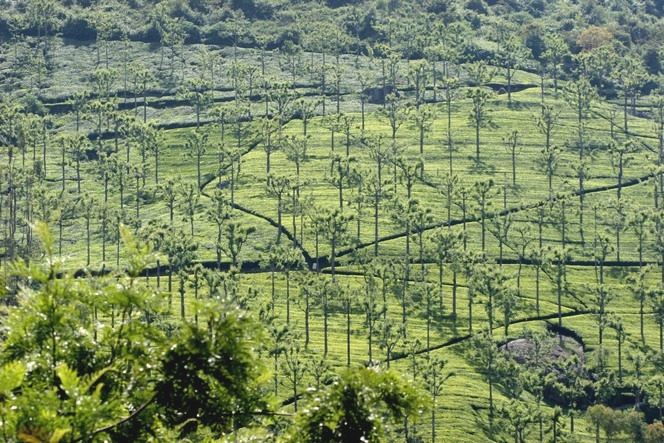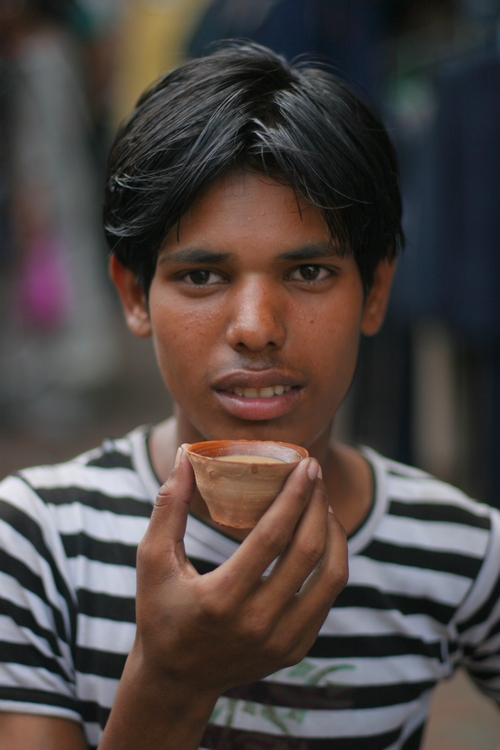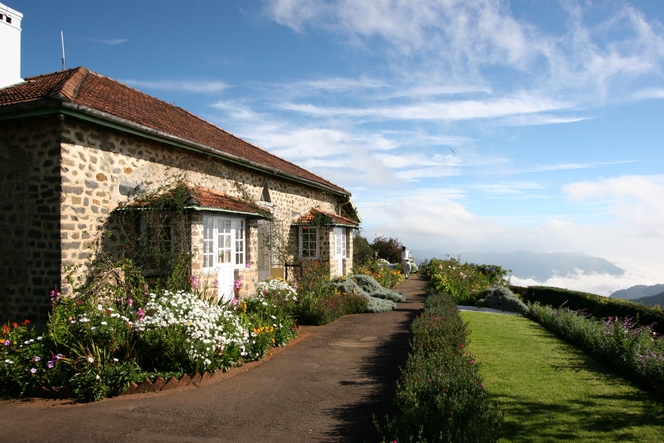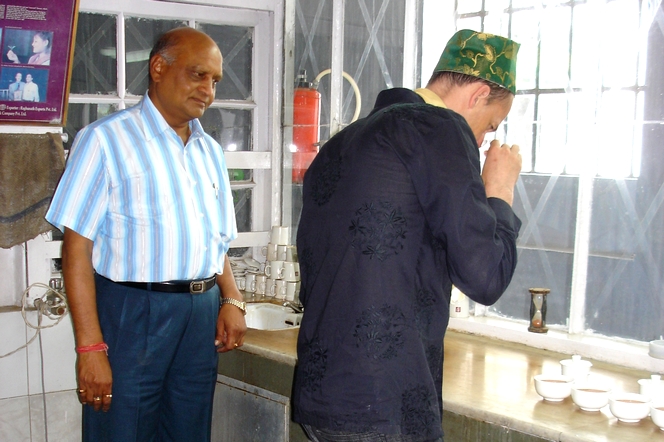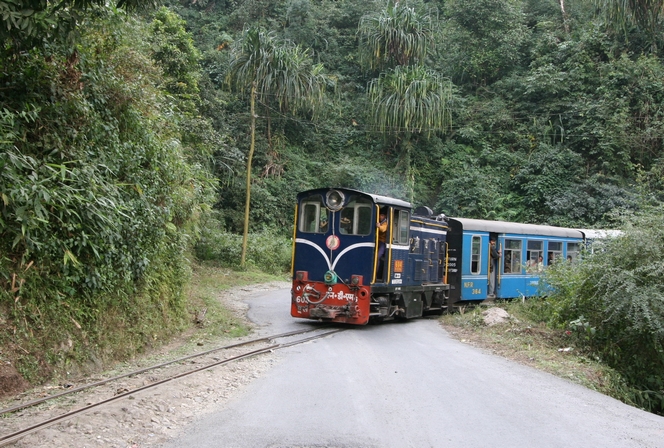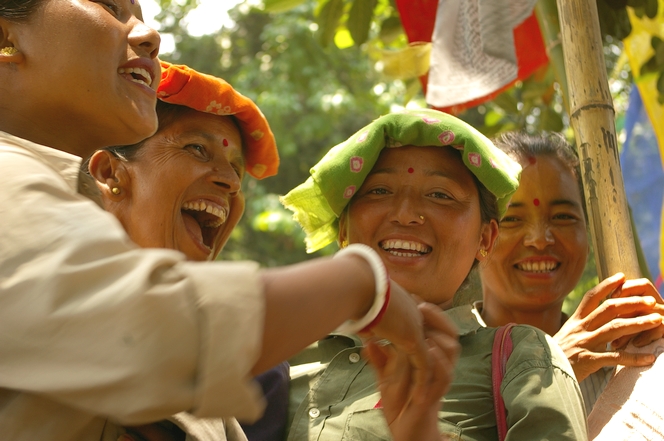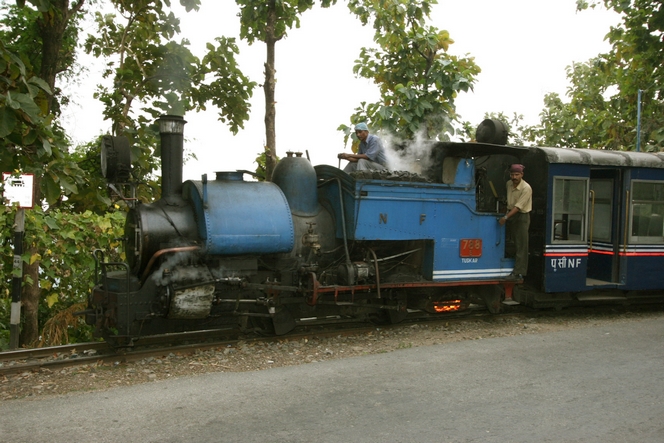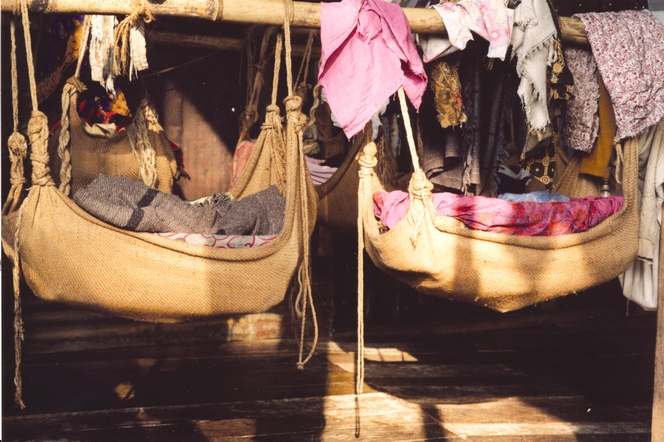When you harvest the tea leaves, you must take great care to pick the right parts. Only the tea bud and the two adjacent leaves give you true quality. Sometimes, to prevent the tea pluckers from taking too much off, they are given a short piece of bamboo. This helps them pick just the right length of shoot and is a reminder of the standards of excellence required (like here at the Namring Tea Estate, Darjeeling, India).
India
I don’t trust plantations that prohibit taking photos
At some tea plantations, they don’t like you taking photos. Sometimes, like here at Kora Kundah (southern India), there are even signs prohibiting it. I always wonder what this means. What do they have to fear from me taking photos? What is it they don’t want me to see? Most of the time it is simply a statement of ownership, a way of prohibiting trespassing. In reality, at the plantation of Kora Kundah, I know I’m free to go where I like and to photograph whatever I want. It is actually a great tea plantation, producing teas of high quality with organic and fair trade labels.
I don’t trust tea estates that limit their access or prohibit taking photos. At first I always ask why. If the reasons are not convincing, I refuse to trade and politely turn back. One mustn’t generalize, but I notice that this happens in Sri Lanka more than anywhere else.
Protecting tea plants from the heat
As I was mentioning it in a previous post, tea requires delicate care. Tea plants appreciate a bit of shade, especially if the sun is strong. In the hottest regions, trees are planted to help the plants and give them some cover, like here in the Nilgiri mountains (India).
Contrarily to Darjeeling and Assam, the tea produced in the region is mainly black crushing-tearing-curling (CTC) tea and harvesting occurs all year round. This straightfoward process applied to low quality leaves makes a tea with little taste, often found in tea bags…
So, not very good teas in this region, but beautiful landscapes, charming little villages (Coonoor, Munnar), gardens growing spices, hills covered with cardamom plantations… An appealing region to say it short.
Tea, a simple drink
Tea is a serious matter, it requires much hard work and science to grow it, harvest its leaves, wither them, heat them, roll them, oxidise them, dry them, sort them and more. But tea is not just about that. It is also a simple drink, an everyday act, an affordable pleasure. Here, in Kolkata, this street seller, just opposite the New Market, is enjoying his chai tea. He’s drinking it from a little throwaway earthenware cup.
Tea growing under British influence
It was the British who introduced and organised tea growing in India. They created large tea plantations called tea estates. Keen to retain the comforts of home, they built charming, typically British cottage-style houses.
When I visited the Thiashola Tea Estate in India, I was lucky enough to be able to stay in this tea grower’s house. It dates back to the nineteenth century. Nestled on the edge of the jungle, it overlooks the tea, the clouds and the Deccan plain. What a joy to arrive there, surrounded by flowers, to contemplate this unique landscape and enjoy its rare silence. A feeling of being at the edge of the world. Total isolation. The moment I loved best: at dawn, pulling on a sweater, going outside and sitting on the front steps, a bowl of steaming tea in my hands, admiring the glowing red sky as the sun rose.
I have just bought the first Darjeeling flush
The first Darjeeling flush is delayed for the third consecutive year. This time, the tea plantations suffer from drought: it hasn’t rained in Darjeeling since October 10th, 2009. Surprisingly, the sky is covered with clouds, the Kanchenjunga cannot even be seen. In the few irrigated plantations, the chill prevents the tea leaves from growing. Temperatures are still very low at night and I sleep with a hot-water bottle at the Planters Club!
So far, most of the tea gardens have only had one harvest (DJ1). Normally, they should have harvested enough tea leaves to make around ten lots (DJ10).
The first lot of Darjeeling harvest at North Tukvar has a floral bouquet of much greater quality than other plantations, even the best ones like Puttabong and Singbulli. I didn’t hesitate to buy this tea which is to arrive in Paris this week-end. It’s a clonal mixture of various cultivars. I don’t usually buy tea at the beginning of the harvest, but if it doesn’t rain in the next coming ten days, the amount available will be scarce.
This year, it might be is very small in comparison with previous years. It doesn’t seem to particularly worry the responsible of Puttabong and North Tukvar, Mr Somani (on the photo), who told me with his Indian-like fatalism: “If there’s a storm tea will grow very fast, only gods know…”.
The little Darjeeling train
These days, when everything has to be fast, modernisation has also affected the little Darjeeling train. For one of the daily services, the steam train lets out a big sigh and takes a break to make way for a diesel engine, as we can see here. So this is a bit of progress to be avoided, unless the journey itself is not your aim and all that matters is to get there quickly.
Tea pluckers at the Longview Tea Estate
These tea pluckers at the Longview Tea Estate (India) are laughing because I’ve brought them some photos I took of them several years earlier in the tea plantations. I like this way of connecting with people. I like going back to places I’ve been before, seeking out the same faces, giving them the photos I took. And then sitting down to enjoy them together.
We can make these kinds of connections on my blog, too. Do comment if you feel like it, tell me what you’ve enjoyed, or what you don’t like. Send me a few words from time to time, make yourselves known, it will give me a sense that you are there, that you are part of the journey!
The “Toy Train” running from Jalpaiguri to Darjeeling
I like taking things slowly. I appreciate anything that takes its time. So you won’t be surprised to hear that my favourite train is one of the slowest in the world, perhaps the last steam train in operation in India. It is nicknamed the Toy Train and it runs between Jalpaiguri and Darjeeling, a distance of 80 km which takes it… 8 hours! It needs all its puff to climb 2,088 metres.
Looking after babies in tea plantations
On the tea plantations in India, there is a system for looking after the babies and infants. The babies are placed in hanging cribs while their mothers pluck the tea leaves in the fields. There is no roof, just a canopy. The mothers take turns to look after the little ones, rocking them while they sing lullabies. As you walk around the tea plantations you often hear their gentle singing.

